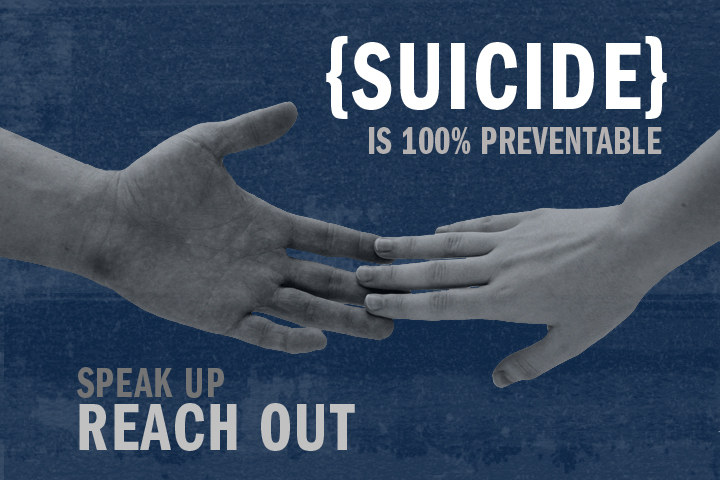5 Myths About Suicide, Debunked
Stigma of suicide

Suicide is the 10th-leading cause of death in the United States, according to the most recent data from the Centers for Disease Control and Prevention. Still, secrets and stigma obscure the causes of suicide and can even stymy prevention.
"Suicide is a major public health issue that gets short shrift on the attention paid to it, because people don't want to talk about it," said Dr. Adam Kaplin, a professor of psychiatry and neurology at Johns Hopkins in Baltimore.
Here are some of the leading myths about suicide and the truth behind them.
Suicide peaks over the holidays

Given the hustle-bustle and stress so many people feel around the holidays, it's perhaps no surprise the myth persists that suicides spike during the winter months. In fact, suicide does show some seasonal patterns. But peaks, when they occur, are actually in the spring.
This spring seasonality pattern dates back to the late 1800s; one 1995 study of suicide rates around the world published in the journal Social Science & Medicine found that in the Northern Hemisphere, suicide spiked in May. This effect is strongest in agricultural nations and in temperate climates, where seasonal differences are more pronounced. Researchers aren't sure why these seasonal patterns exist, but a leading theory holds that social life becomes more intense in the warmer months, putting extra stressors on people struggling with mental health.
Putting ideas in people's heads

When someone seems depressed, their loved ones may fear asking if they're having suicidal thoughts, worrying they'll put the idea in the person's head.
Not the case, experts say. In fact, mental health professionals say that if you're worried about someone, the best thing to do is to talk with them openly. Asking someone if they're having suicidal thoughts will not put those thoughts in his or her head; talking about it, as hard as it is, may help that person break the tension and secrecy that feeds into suicidal behavior. And, above all, talking helps that person get help.
When talking to someone about suicide, don't try to talk them out of it, advises the American Foundation of Suicide Prevention (AFSP). Phrases like, "You have so much to live for," may fall flat for someone in the grips of suicidal thoughts. Compassion and empathy are key. The AFSP advises words like, "Things must be really awful for you to be feeling that way." Never leave a suicidal person alone, and make sure they have no access to lethal means such as firearms. [Suicide: Red Flags and Warning Signs]
Suicidal talk is just attention-seeking

A common myth holds that people who talk about suicidal thoughts or people who self-injure are just crying out for attention, while the ones who never say a word are the ones to worry about.
Not true. Talking about dying or harming oneself is one of the major warning signs of a suicide attempt, according to the AFSP. Not everyone who attempts suicide will signal their intentions, of course; but just because someone is talking about suicide does not mean they are somehow safe.
If someone discusses wanting to die or commit suicide, or is researching ways to kill themselves, call the National Suicide Prevention Lifeline immediately at 1-800-273-TALK (8255) and do not leave that person alone.
Most people leave a note

Upon hearing that someone has committed suicide, the immediate question is often: "Did they leave a note?"
The idea that note-writing is a key part of the suicide process may make sense to the non-suicidal mind, said psychologist Thomas Joiner of Florida State University, author of "Myths About Suicide" (Harvard University Press, 2011). In actuality, studies find rates of note-leaving between zero and 40 percent.
"The fact is that most people don't leave notes," Joiner told Live Science. "I think the reason for that is they're in a state of mind that is very alienated, cut off from people, so they're disinclined to communicate."
Suicide is inevitable

The idea that suicide is inevitable is perhaps the most pernicious myth of all. Many people believe that a suicidal person will find a way to die no matter what — this argument is used by those opposed to suicide barriers on the Golden Gate Bridge, for example.
In fact, more than 90 percent of people who commit suicide have diagnosable mental health problems, research shows. But the act itself is very often the response of a stressed-out, troubled person to a momentary crisis. One 2001 study published in the journal Suicide and Life-Threatening Behavior found that among 153 cases of nearly completed suicides, 24 percent of people tried to kill themselves within 5 minutes of deciding to commit suicide. Seventy percent made an attempt within an hour of the decision.
What's more, 90 percent of people who attempt suicide and survive (even using extremely lethal means such as firearms) do not go on to die by suicide, according to a 2008 paper in The New England Journal of Medicine.
That's why mental health experts advise removing opportunity and means from suicidal people — once the crisis is past, the person can be successfully treated for the underlying mental disorder. As survivor Ken Baldwin told The New Yorker magazine in 2003 of his attempt to kill himself by jumping off the Golden Gate Bridge, the regret was immediate: "I instantly realized that everything in my life that I’d thought was unfixable was totally fixable — except for having just jumped."
Sign up for the Live Science daily newsletter now
Get the world’s most fascinating discoveries delivered straight to your inbox.

Stephanie Pappas is a contributing writer for Live Science, covering topics ranging from geoscience to archaeology to the human brain and behavior. She was previously a senior writer for Live Science but is now a freelancer based in Denver, Colorado, and regularly contributes to Scientific American and The Monitor, the monthly magazine of the American Psychological Association. Stephanie received a bachelor's degree in psychology from the University of South Carolina and a graduate certificate in science communication from the University of California, Santa Cruz.










